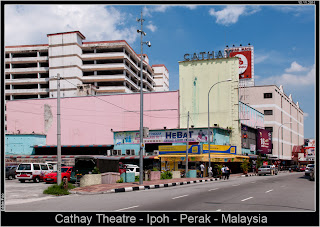Just took a walk down Memory Lane (Horley St.) Ipoh to look at the crowd and some of the nostalgic items put on sales. It is the place where one can find almost any old items which are no longer available at the normal outlets. Even parts of an item can be bought here, especially for those who are good at restoring old broken down items. Walking down this Memory Lane can take hours and you just don't feel time passing by because you are sure to be fascinated by some of the items there and you can take as much time as possible to touch, see and examine them, as you like. Some people call it a flea market, while others call it a thief market and yet there are the more humble ones who name it the second-hand market. But, officially, it is aptly called the Memory Lane.
 |
 | |
This is the gateway to Memory Lane. The canopies are mostly stalls selling new items such as clothes, shoes and handbags.
This man is selling old gas lamp, charcoal iron, old record player and a whole collection of items from the past. Most of the items still work!
This guy here sells a mixture of new and old hardware. Electric cutter, circular saw, polisher, they are all there. If one cannot afford a new one, there is always a second-hand one available.
This young couple is attracted to a stall selling copper-ware. Again, there are new and old items for sale. Of course, most people would prefer the old to the new because of the antique look.
This stall even sells old advertisement posters and boxes from the past. This one really attracted my attention - a 1960's advertising poster of Gordon's Gin and another one of White Label Whisky.
 | ||
| Here, clocks of all sorts from the past - some can still work, others are just for display or could be repaired. |
This small crowd seemed to be interested in second-hand electronic gadgets - handphone, handphone covers, battery, or handphone chargers of all brand and make, and even an outdoor speaker!
If one is not interested in all the electronic items then how about some old magazines and books? Old copies of National Geographic are in great demand- but never short of supply from this man. Old books and a spotted even a whole volume of law books!















































